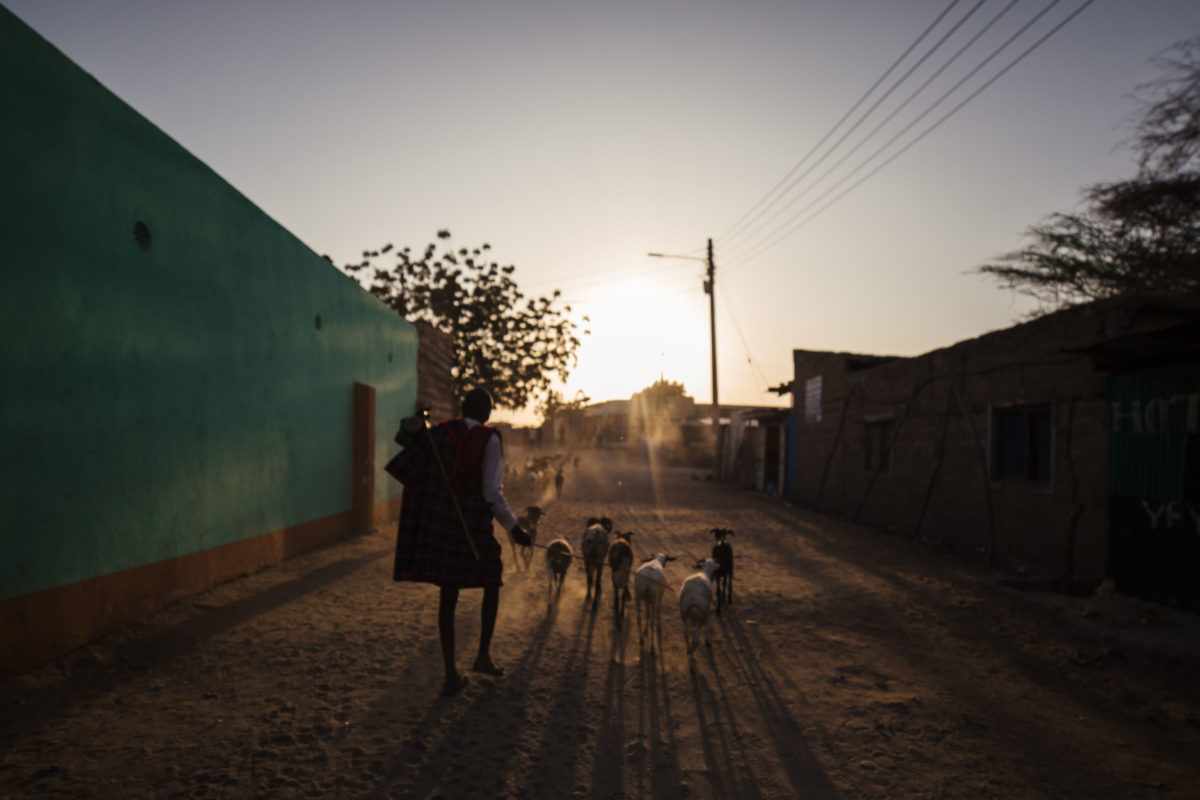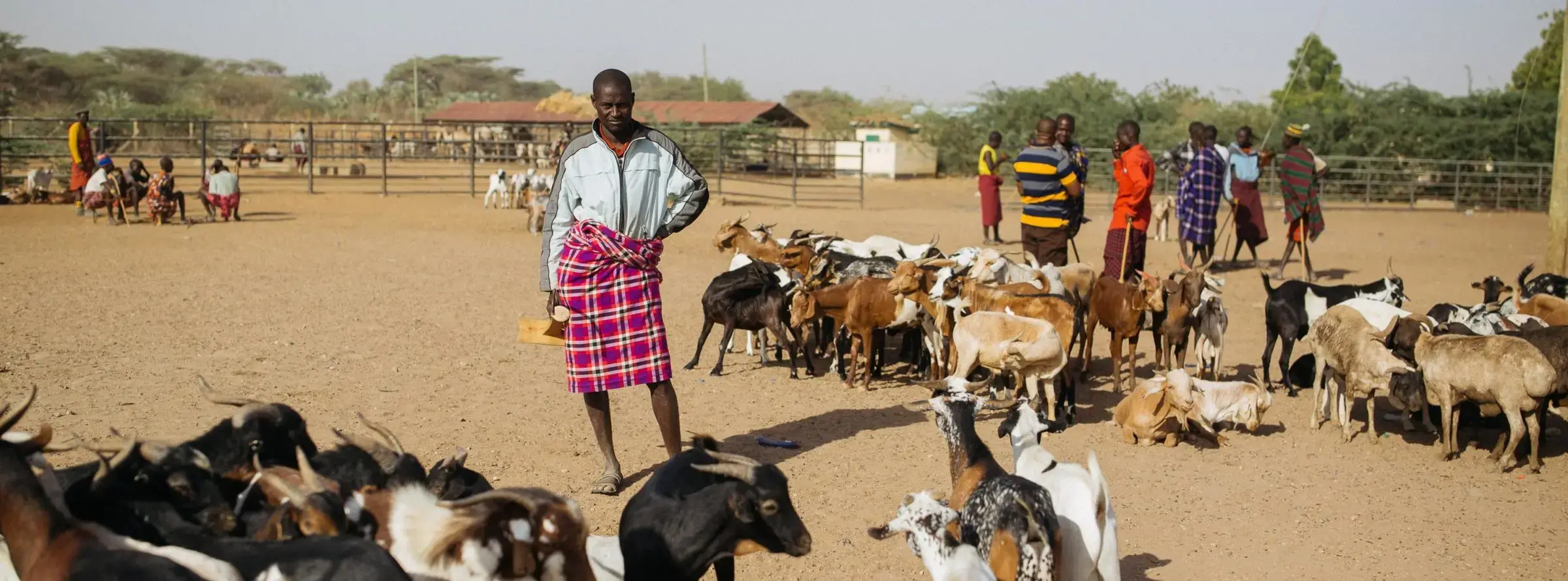
- As the unabating drought in Kenya persists, pastoralists in the region are struggling as millions of their livestock perish and vast swaths of crops die. About 4.4 million people in the country are food insecure.
- International food agencies are calling it a dire humanitarian situation and highlight the vital need to build communities’ resilience to adapt and cope with drought.
- Mongabay speaks with David Lelei, a Kenyan soil biologist at the World Agroforestry Centre, on the agroecological techniques and strategies pastoralists and the government can use to restore healthy soils to promote productive farming.
- Mary Njenga, a research scientist at the World Agroforestry Centre who works with 1,200 households in northern Kenya, also speaks with Mongabay on climate-resilient strategies.
WESTERN TURKANA, Kenya—Driving across Northern Kenya’s Turkana County, the seemingly boundless terrain of sand dunes, dusty brushes and hard, dry soil makes it hard to imagine anyone could farm and eke a living out here. As Kenya and the Horn of Africa are confronted by the fifth consecutive failed rainy season since September 2020—the region’s worst drought in four decades—around 22 million people (roughly the population of Taiwan or Sri Lanka) are food insecure, says a U.N. World Food Programme report released last month.

As a nonprofit journalism organization, we depend on your support to fund more than 170 reporting projects every year on critical global and local issues. Donate any amount today to become a Pulitzer Center Champion and receive exclusive benefits!
In Kenya, the number stands at 4.4 million as of December 2022, with children needing acute treatment for malnutrition on the rise.
The numbers and immense toll on pastoralists and agro-pastoralists, who rely on both crops and livestock, grow starker still: their animals have been dying en masse with, 2.5 million livestock deaths recorded by the Government of Kenya, and entire communities pushed to pursue different livelihoods as traditional means and resources fail.
Patricia Nying’uro, a climate scientist at the Kenya Meteorological Department, says that although there are several causes of the ongoing drought, La Niña conditions are a significant contributing factor. This periodic cooling of sea-surface temperatures over the Pacific Ocean, the meteorologist tells Mongabay, leads to certain negative indices, such as prolonged drought.
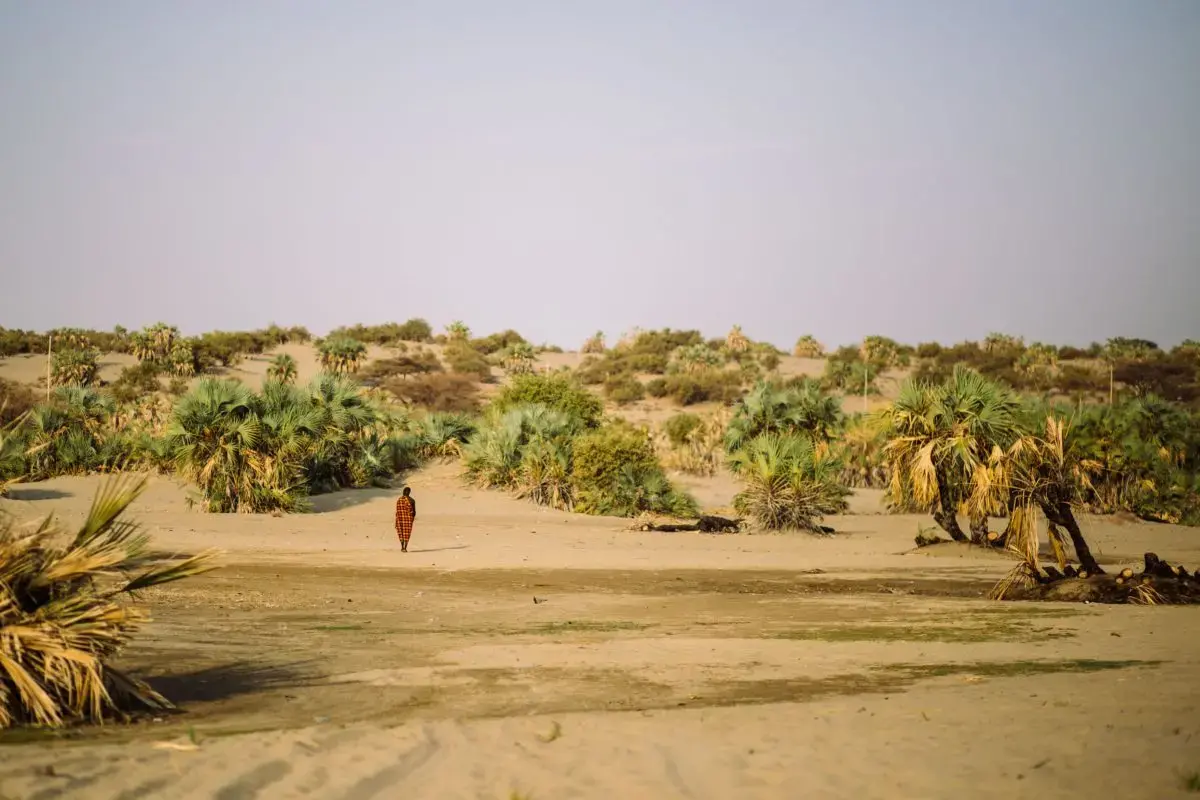
A U.N. report has confirmed that the remaining 10 million livestock in Kenya’s drylands suffer from a lack of watering points and forage, such as scutch grass (African couch grass, Digitaria abyssinica) and napier grass (Pennisetum purpureum). This region is the ancestral lands of the Turkana, traditional livestock herders (pastoralists) who depend on their animals and environs for milk, food and shelter. The Turkana also practice small-scale farming when conditions are suitable; however, the drought has led to the loss of vast swaths of arable land for crops like sorghum, cowpeas, and green grams.
“Given the depressed rains, most areas continue to experience severe vegetation deficits with significant impacts on pastoralist and agro-pastoralist livelihoods,” states the report.
And meteorological agencies aren’t optimistic this is going to change soon. Though future weather patterns are uncertain, there is broad consensus that below-average rains will continue into the coming March-to-May 2023 rainy season.
For international food agencies, this steps up the need to not simply deliver food and life-saving aid but to urgently build communities’ resilience to climate variability. On a tight budget with limited global attention to the humanitarian situation, finding and implementing climate adaptation solutions pastoralists and agro-pastoralists can tangibly use to alleviate their toll is a necessity, they say.
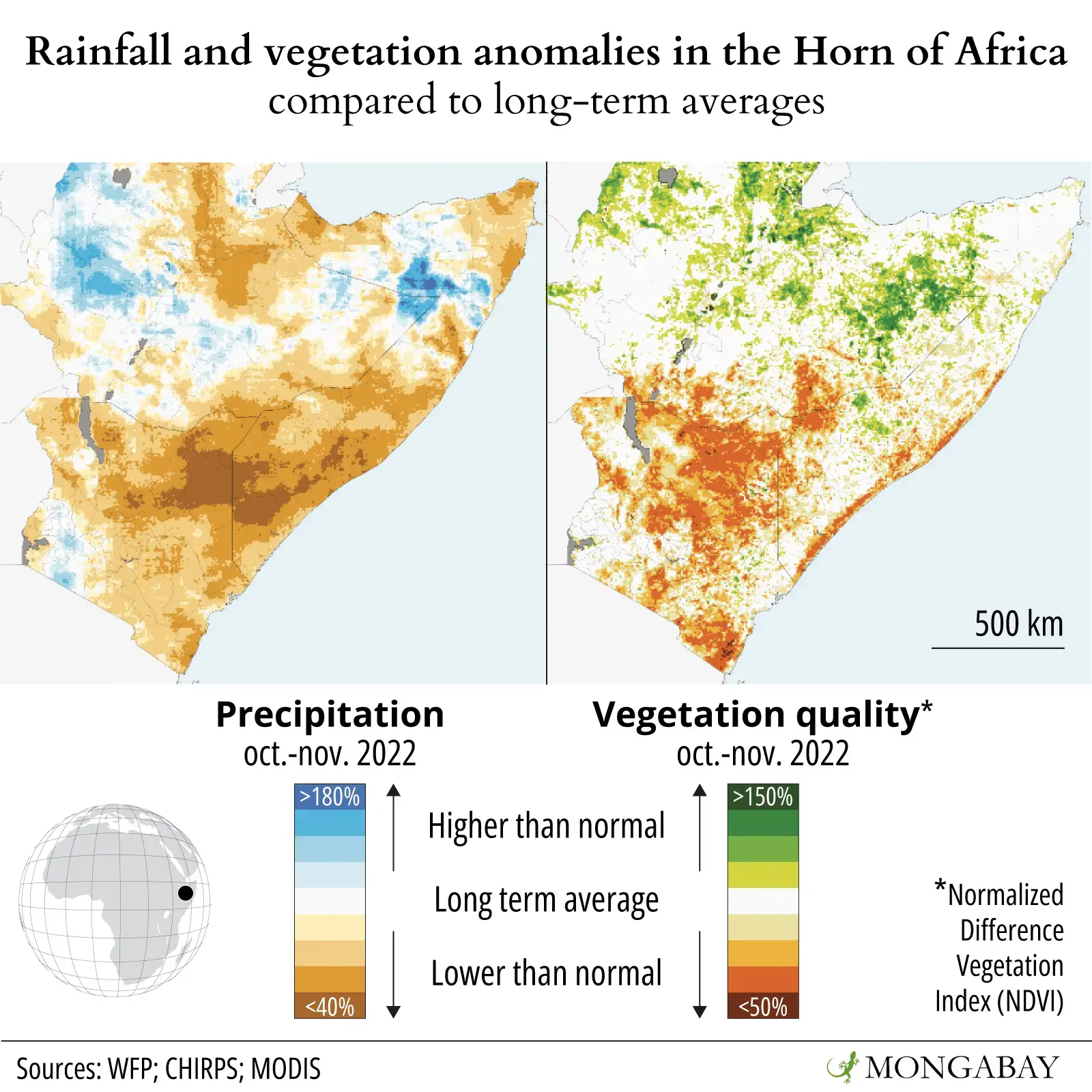
“Forward-thinking solutions to climate-driven emergencies are vital,” notes an op-ed by directors of four U.N. food agencies. “Children and their families are being worn down year after year, with no time for recovery.”
In the region, agroecology and agroforestry experts are promoting techniques that inhabitants of the region, whether they are herders or farmers, can use to improve their resilience by improving soil degradation induced by drought. Agroecology is a term for systems that increase agricultural yields while reducing environmental degradation. Agroforestry is a type of agroecology system that integrates trees and forests into agricultural yields. In Kenya, experts also encourage agro-pastoralists to do crop rotation, intercropping (growing different crops together), mulching, buying drought-tolerant crop seeds, and leaving fields to be fallowed.
Pastoralists can also aid by providing manure to fertilize crops and even reserve land for agricultural activities, says David Lelei, a researcher at the World Agroforestry Centre’s (CIFOR-ICRAF) Living Soils Laboratory in Nairobi, Kenya.
Lelei is an expert who advises local farmers on these agroecology techniques. The laboratory’s goal is to study how organisms in the earth, like earthworms, fungi and bacteria, restore and sustain soil fertility and plant growth when introduced through agroforestry systems and farm strategies. The laboratory analyzes these “soil biota” like arbuscular mycorrhizal fungi, which can form symbiotic relations with plants and strengthen their adaptivity to changing environments.
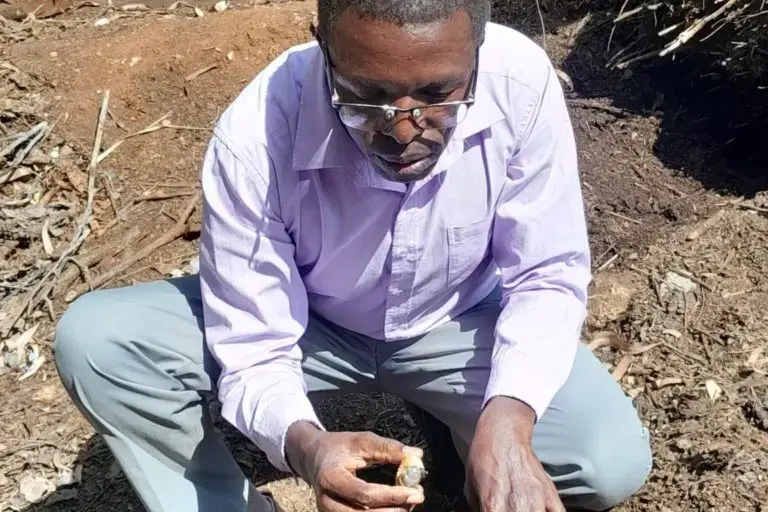
According to Dr. Lelei, robust soil biota has a higher capacity to restore degraded soils and improve agricultural productivity. By focusing on the interactions between trees, soil, organisms and agriculture, researchers hope to reverse soil degradation strategically.
Mongabay spoke to Lelei and his colleague Mary Njenga, a research scientist with the Refugee-Hosting Engagement Landscape initiative of CIFOR-ICRAF, which works with nearly 1,200 households in Turkana County and partners with organizations like the Danish Refugee Council, UNHCR, and the Turkana County government.
The following interview, which explores agroecology adaptation tips for drought-impacted pastoralists and agro-pastoralists in northern Kenya, has been edited for length, style, and clarity.
Mongabay: Pastoralists are struggling to maintain the survival of their livestock, which is another mouth to feed during this drought. What can pastoralists do to maintain the health and relevancy of their animals?
Lelei: To cope with the drought, farmers in Turkana will have to shift away from certain traditional practices. Since many cattle are dying, many pastoralists and agro-pastoralists are being forced to turn to agriculture. But animals can still be part of the equation. For instance, using cattle manure is an important natural fertilizer and the best for soil fertility. If the government can provide organizations with boreholes, that can also help with small-scale irrigation.
Pastoralists are known for their fluidity in diversifying livelihoods. During droughts, they can pivot to agroforestry by restoring and protecting locally grown trees, setting aside land for agriculture activities, buying drought-tolerant crop seeds that can grow in dry areas, and saving water for use in irrigating their crops. Practicing harvesting water for use in irrigating crops and restoring and protecting native trees will help protect the soil by shading and increasing the amount of organic matter in the soil, which leads to higher soil fertility.
But for this to work on the ground, it’s essential to get local communities—such as the disparate ones across Turkana County—on board as part of cohesive, grassroots efforts.
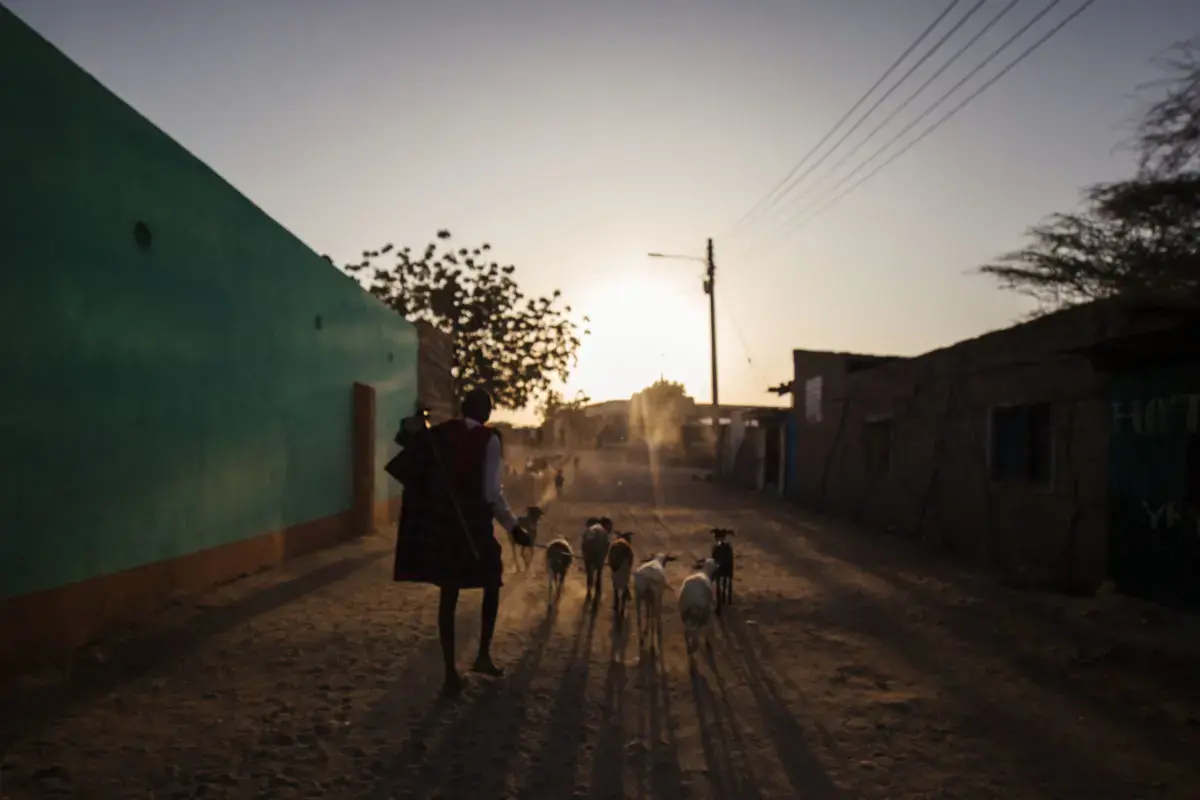
Mongabay: You talk of the benefits of pastoralists further integrating agriculture into their livelihoods during a drought—which seems counterintuitive. Could you explain why that is and how this can alleviate the severity of soil degradation?
Lelei: During droughts, plants dry up, leaving the soil bare. The increased temperature on the surface of the soil from solar radiation leads to the expansion and contraction of soil particles, resulting in the breaking of bonds holding the soil particles together, hence the disrupted soil structure. Soil erosion by wind or rainfall takes effect, removing the organic matter layer, which is the home of soil organisms, resulting in soil degradation.
When people transition to agriculture, if they’re using manure to fertilize the land, that returns some organic matter to the soil. Weeds, whether they are annual or perennial plants, drop leaves and twigs into the soil, which becomes food for soil biota. At the same time, their shade reduces solar radiation from killing microorganisms. Therefore, they play a key role in improving soil fertility and making soil conducive for soil biota to thrive. The introduction of agriculture would also reduce pressure on land since high livestock populations always strain the soil.
This gradual transition will also increase the number of farming communities. Whichever crops people are going to plant will regreen the area and increase the number of microorganisms in the soil (for example, fungi, actinobacteria and arbuscular mycorrhizal fungi), thus improving soil health. Other beneficial soil organisms that contribute to the breakdown of organic matter and increase soil fertility include soil macrofaunae like earthworms, termites, ants, beetles, and millipedes, and soil mesofauna such as mites, collembola, and enchytraeids. Bolstering soil health will lead to more productive crops and nutritious food. When the environment improves—when this current drought ends—there is enrichment, such as productive fruit trees.
In these drylands, you can see pockets full of stumps of native tree species. But through the regeneration of such Indigenous trees, the vegetation can grow quite well. Natural recovery of wood species enriches the landscape, which is coupled with grass regeneration. This is cheaper than planting trees since people are back to managing what used to be there on the land—giving trees, which had previously been cut down, the chance to grow. This changes the whole microclimate and comes with many livelihood opportunities. Firewood is closer to home; there’s fodder for animals and even opportunities for beekeeping within the trees.
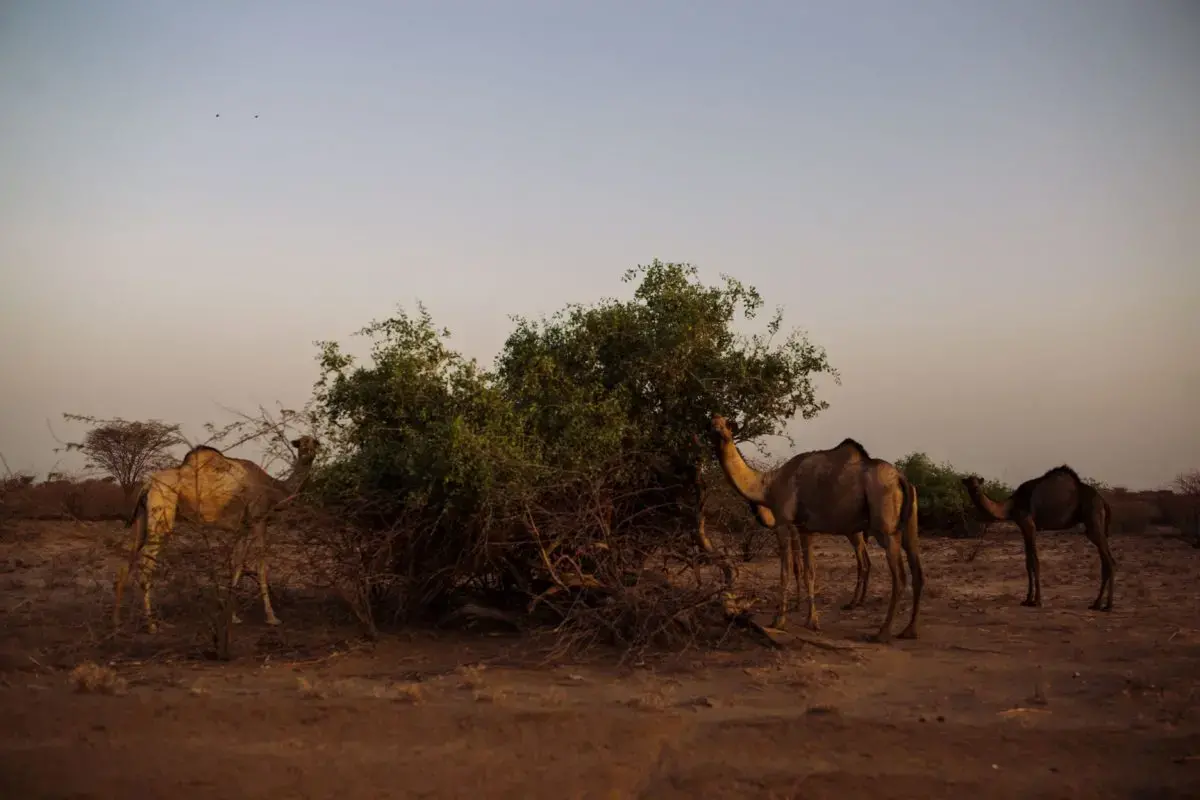
Njenga: Planting cover crops or practicing crop rotation and intercropping are basic sustainable agriculture principles that promote biodiversity. Cover crops produce large quantities of biomass, which increases organic matter to the soil and increases soil richness. Permanent cover crops improve the physical, chemical, and biological properties of the soil while reducing tillage helps propagate healthy fungal population.
Mongabay: What can the state also do to help these agro-pastoralists adapt?
Lelei: We believe in bringing together all the players (government, NGOs, and other like-minded organizations) into actions to help the restoration of soil, landscape, and biodiversity, with the aim to improve the livelihoods of herders and farmers. Sensitizing agro-pastoralists and farmers on the effects of pesticides on soil organisms, the environment, and human health is important, along with promoting the use of agroforestry systems and soil erosion control systems.
The government also needs to promote climate-resilient products. The promotion of cover crops and biodiversity is important for soil protection and to prevent erosion. Sorghum, which can be grown in very dry conditions, and the hyacinth bean (dolichos lablab) are two suitable crops for arid landscapes edible by both people and livestock.
Njenga: We really need to jumpstart this germination process by getting a reliable supply of fruit and vegetable seeds. The government can help set up certain areas, such as creating a local seed system that has a very short supply chain. It would be really good to also promote the growth of certain trees, such as the native acacia, which is easy to domesticate and can be used in many ways, from windbreakers for crops to making jiko (charcoal). These processes would then benefit both people and livestock. But there are also environmental challenges—the agroforestry survival rate is highly affected by drought.
For real uptake and capacity building, we need to train communities. This requires continuous extension officer services to advocate new practices and eventually influence individuals to train their peers.
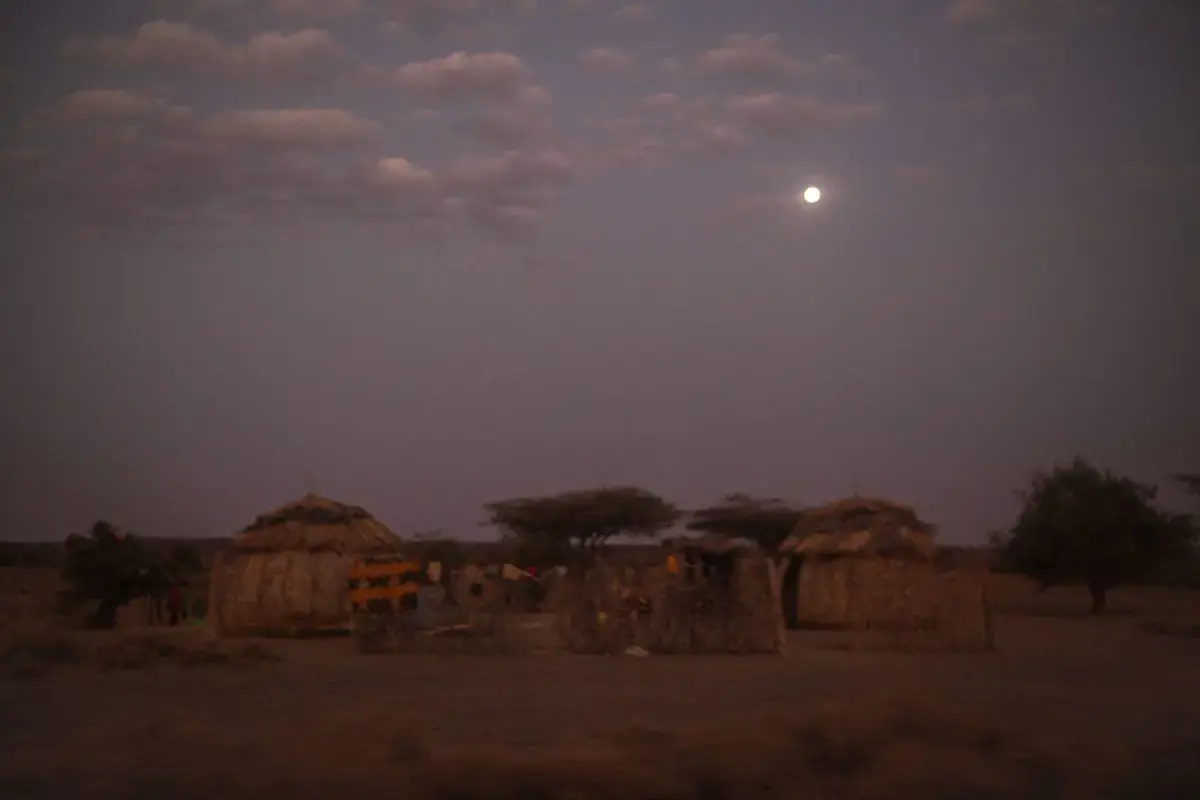
Mongabay: For pastoralists who are staying in the profession, what are some techniques you recommend they adopt that are more friendly to soil biota to encourage the growth of grazing areas?
Lelei: There are many things herders have to do. Firstly, it’s to reduce the population of animals, so it’s not beyond carrying capacity [the number of livestock that a region can support without environmental degradation]. Pastoralists can reduce animal populations by selling off some of their animals. That is the most important thing. Too many animals will compact the soil, which leads to higher chances of erosion. When the soil is bare, it absorbs a lot of heat which eliminates a lot of soil biota and organisms like earthworms. If the soil has grass, that will protect the soil from direct sunlight and also contribute to photosynthesis.
We’d also recommend rotational grazing to prevent denuding areas with uneven grazing pressures. Ideally, the government would help provide local communities with the means of protecting the landscape by planting grass. Those who are still herding animals would help to replant grass from places their animals have been.
Njenga: Turkana has strong local institutions and systems where people listen to their own. We need members within the community to carry out these initiatives, such as mzees (leaders) and elders advocating not to graze in certain places at certain times in order to improve soil conditions for farming. Then people will listen.
Mongabay: Are there ways in which herders and farmers can work together to improve soil biota and health?
Lelei: Farmers and herders need to coexist. They need to come together and agree, building upon their local structures. They can practice resource recovery and reuse, where herders supply manure for crop production—to fertilize the soil and grow plants that will shade the land and increase soil moisture. On the other hand, crop residuals can be fed to animals. This would create a mutual barter and common understanding that benefits both.
Rotational grazing would work, where swatches of land are swapped off between farming and animals. This is the circular bio-economy, where herders could guide their animals to move across and fertilize vital places at certain points in the season for the farmers.

Mongabay: Which other efficient regenerative soil and agroforestry techniques do you most recommend for agro-pastoralists?
Njenga: We’re working on adapting agricultural and dryland management practices where people produce food and cooking fuel by recovering and reusing brush and trees. For instance, many pastoralists tend to congregate around boreholes and watering points, which are important socializing areas. We train them on how to harvest the runoff gray water from these watering points and use it to irrigate vegetables or fruit trees, which provide nutritious crops that are hard to come by in the drylands. Even these small amounts of runoff water from household use can be used to grow gardens.
We also create biofertilizers from organic waste and introduce burned jiko, which is commonly used for cooking, to help with soil improvement. The idea is to tap into rotational, small-scale irrigation for households. Using this can build food security systems from organic waste.


